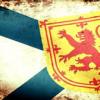Search the Community
Showing results for tags 'Plymouth'.
-
With 3 aircraft builds on the go I felt it was time to spice up my workbench with some wheely goodness, so I'll be building this... The kit has its origins in a Monogram 1971 Plymouth Satellite kit (first released in 1984). I'm not exactly a big officionado on US muscle cars but apparently the kit isn't a great representation of the movie car (I think the actual car in the movie had different rear bumper sections from a later model, and the side skirt detail removed, etc.), I'm not planning on going overboard with the accuracy though - just going to pretty much do an OOB build, with the addition of the resin bloke as hopefully a fun build. Here's what greets you inside the side opening box... So the body section is heat sealed into a sub compartment thankfull to stop it getting box-rash, but the other half contains another poly bag? Inside that there are sub-bags for various parts - chrome tree, clears and wheels (though they may have been stuffed into the body shell). Here's all the bit laid out... Kit instructions are the new style Revell colour booklet and the decals seem reasonable, nothing too intense to worry about other than those bonnet stripes. Here's the contents of the aftermarket figure, just some scant instructions on how to form the shotgun trigger from the PE, I might leave that out, the resin looks fine for me. Nothing too stressful looking in terms of the kit parts count, though I need to figure out how much of the bodywork I can assemble pre-paint. I had a bit of a test fit of the body and chassis rails and it's tight without the interior tub and engine getting in the way. I might be able to get the rear sections attached and front grill but the front lower bumper would need to be added separately which is a bit annoying (looks like there'll be a seam line). Maybe I can 'cut and shut' the lower chassis later then drop the engine in through the hood opening? Something to ponder as I cleanup the parts. I'm also wondering about the chrome parts - I'll need to de-chrome with some bleach but I wonder if I could put a bit of liquid mask into the light openings to keep those bits chrome?
-
Dominic’s ’71 Plymouth GTX (07692) Fast & Furious 1:24 Revell There’s a little-known petrol-head friendly film franchise called The Fast & The Furious that started out with Vin Diesel and the late lamented Paul Walker in a film by the name of “The Fast and the Furious” that now extends to nine films with a two-parter as 10th and 11th of the saga, plus a spin-off movie with two more planned, one with the ladies in charge, and one for the men. I lost touch with it after number 2, as it I felt it was getting a little extreme in terms of what a car can do on the open road without CGI and wires helping out. The Plymouth division of Chrysler introduced the GTX as the Belvedere GTX back in 1967. It was redesigned in 1971 with a more rounded styling including a raked windshield, hidden cowl, and a loop-type front bumper around a deeply inset grille and headlights. 1971 was the final year for the GTX as a stand-alone model. Engines available were a 440 four-barrel, 440 with three two-barrels (Six Pack), and 426 Hem. Due partly to rising insurance rates on muscle cars, sales were low. There were less than 3,000 units produced in 1971 The Kit This is a rebox of an original kit from 1995. It arrives in an end-opening box and has five sprues of white styrene plus a body shell part, a set chromed parts, and a clear sprue, eight soft black tyres; and a colour instruction booklet with colour profiles on the rear pages. Time has been very kind to the sprues, and there is plenty of detail moulded-in. Strangely the top of one of the seat backs has been cut off in this kit? Before construction starts you need to decide if you are making a standard GTX or the film car. Construction begins with the engine, which is well-detailed and includes the transmission, with belts, pulleys and other parts being added. The wheels get made up next with different wheels for the standard or film car. The front steering sub-frame is then added to the main floor pan with the engine going in above this. At the rear the rear axle/exhaust parts go in and the drive shaft is connected. The modeller must note there are different assemblies here fro the 2 versions of the car being modelled. We then move to the interior. The dash is built up with different decals depending on the version being modelled. The steering column and wheel are then added to the dash. The seats are made up and added in to effectively what is an interior tub, followed by the dash. The clear parts are then added to the body shell and the tub is then fitted in afterwards. To the rear of the body shell the lights are added. The body shell can then be mounted to the floor pan. Once together the front bumper can be added along with the head lights. The engine and engine bay are finished off with additional parts being added. The car is finished off with the addition of the bonnet, mirrors and rear spoiler. Markings The standard car is blue and the movie car is black. Decals are by Cartograf, which is a guarantee of good registration, sharpness and colour density, with a thin gloss carrier film cut close to the printed areas. There are seatbelts and interior details as well as number plate decals and the bonnet stripes for the movie car. Conclusion A nicely timed re-boxing of a decent kit that builds up into a good replica of the smoke & mirrors of a Hollywood cash-cow franchise. Recommended if you are fan of the movies and want to build the cars from them. Currently, Revell are unable to ship to the UK from their online shop due to recent changes in import regulations, but there are many shops stocking their products where you can pick up the kits either in the flesh or online. Revell model kits are available from all good toy and model retailers. For further information visit or
-
Hey All At the request of a friend, I'm not supposed to talk about losing my sanity and building car models instead of my usual aircraft... oh wait, oops, sorry Rob Today I present Revell's 1/25 1967 Plymouth GTX. Enjoy.. In 1967, Plymouth was know for making good, dependable everyday cars for the everyday person. The GTX was advertised as "The Gentleman's Muscle Car" and was essentially a performance oriented version of the company's popular Belvedere. Coming from the factory with the legendary 426 Hemi, the GTX was packing some serious heat. Although the GTX finally gave Plymouth the muscle car it needed to compete with Ford and GM, it ended up playing second fiddle when Plymouth unveiled the Road Runner in 1968. Unlike my last car build, this one was more or less box stock and therefore I had no real problems aside from the right side A pillar. This had a bit of an outward warp, fortunately it is not all that noticeable... I hope. The engine was given a Morgan Automotive Details distributor and this was the extent of the aftermarket add-ons The body was primed with Badger's new Stynylrez primer (Absolutely love this stuff!) and given two good coats of Model Master British Metalllic Green enamel thinned with Tamiya lacquer thinner. Apparently the internet is correct and thinning enamels with lacquer thinner greatly speeds up the drying time. Within a day or two the paint was followed with two coats of Tamiya X-22 gloss and a polish with Novus 1 and 2. The chrome was stripped from the front and rear, these being painted with Vallejo's new Metal Color paints. All the trim work was done with Bare Metal Foil. This stuff, although tedious, is not a difficult as some people let on. What can I say? I guess I'm hooked on these car things. I makes a nice change of scenery from the usual stuff crowding my workbench and gives me a chance to try different tricks and techniques I wouldn't otherwise use. Regards ANS .
- 10 replies
-
- 13
-

-
1941 Plymouth US Forces staff car, pics thanks to bootneck.
-
HMS Plymouth MT Miniatures1:700 HMS Plymouth is a Rothesay-class frigate, which served from 1959 to 1988. She was built at Devonport Dockyard, in her namesake city of Plymouth, and launched by Viscountess Astor on 20 July 1959. During her commissions, Plymouth served in a variety of locations, including the Far East and Australia. She saw action in the Cod Wars between the United Kingdom and Iceland and also the Falklands War in 1982. In which not only was she the ship on which the surrender of the Argentine forces on South Georgia was signed, but was also hit by five bombs and cannon fire during the landings of The Falklands Islands, all the bombs failed to explode and the ship was saved through good damage control and fire fighting. The following year, she served as the West Indies guard ship. On 11 March 1984 she was involved in a collision with the German Köln-class frigate Braunschweig and in 1986 she suffered a boiler room fire, killing two sailors. HMS Plymouth was decommissioned on 28 April 1988, and was the last Type 12 in service. The model The model is packaged in a plain brown cardboard box, on which a picture of the completed kit and the kit details are printed. Inside, the parts are in separate poly bags and covered in poly chips. The instructions, consisting of a single side of A4 are really just an exploded view of the parts with arrow point to their positions. They are not particularly clear and will take some patience to decipher. The hull and superstructure of the ship is moulded as one complete, waterline part. The moulding is very good with some very finely done detail. The only clean up required is the moulding stub under the stern, and a couple of points on the funnel, transom and mainmast. The metal parts, which consist of the main twin 4.5" turret, two 20mm Oerlikons, director, foremast, ships boat, seacat launcher, limbo mortar, search radar, and navigation radar. These parts look a little rough and will take quite a bit of cleaning up before fitting, whilst the main turret looks slightly odd, perhaps a little too long and the guns are of different lengths, but this can easily be sorted. The Limbo mortar also looks slightly too large. The ships boat appears to have been moulded the wrong way round in that the davits are on the wrong side and. If launched, the boat would be lowered into the water stern first. The Wasp helicopter is very basic and needs quite a bit of flash to be removed. The small etched sheet is a generic set, based on all the Rothesay class that MT Miniatures do, but gives the Plymouth the required yards, railings, flightdeck netting, and the fore and aft flag staffs. There is a separate fret containing just the main rotor for the Wasp which doesn't appear to be correct, in that it has wider chord tips thatn the rest of the rotor blades. The brass is well etched and with very fine detail, so care will need to be taken when fitting the parts to the model. The three tiny decal sheets provide the ships pennant numbers, Union flag and Ensign, plus the flightdeck markings. Conclusion Whilst it is very nice to have a Type 12 frigate in model form, and considering the work that the designer has taken with detailing the hull and superstructure, it is a shame that the same amount of care wasn't taken with the metal parts. I may have been spoilt with what I see other companies do in this scale, and feel that this could have been an excellent model, rather than just nice and good in parts. I can recommend this model as long as you're prepared to put some work into it. Review sample courtesy of:






